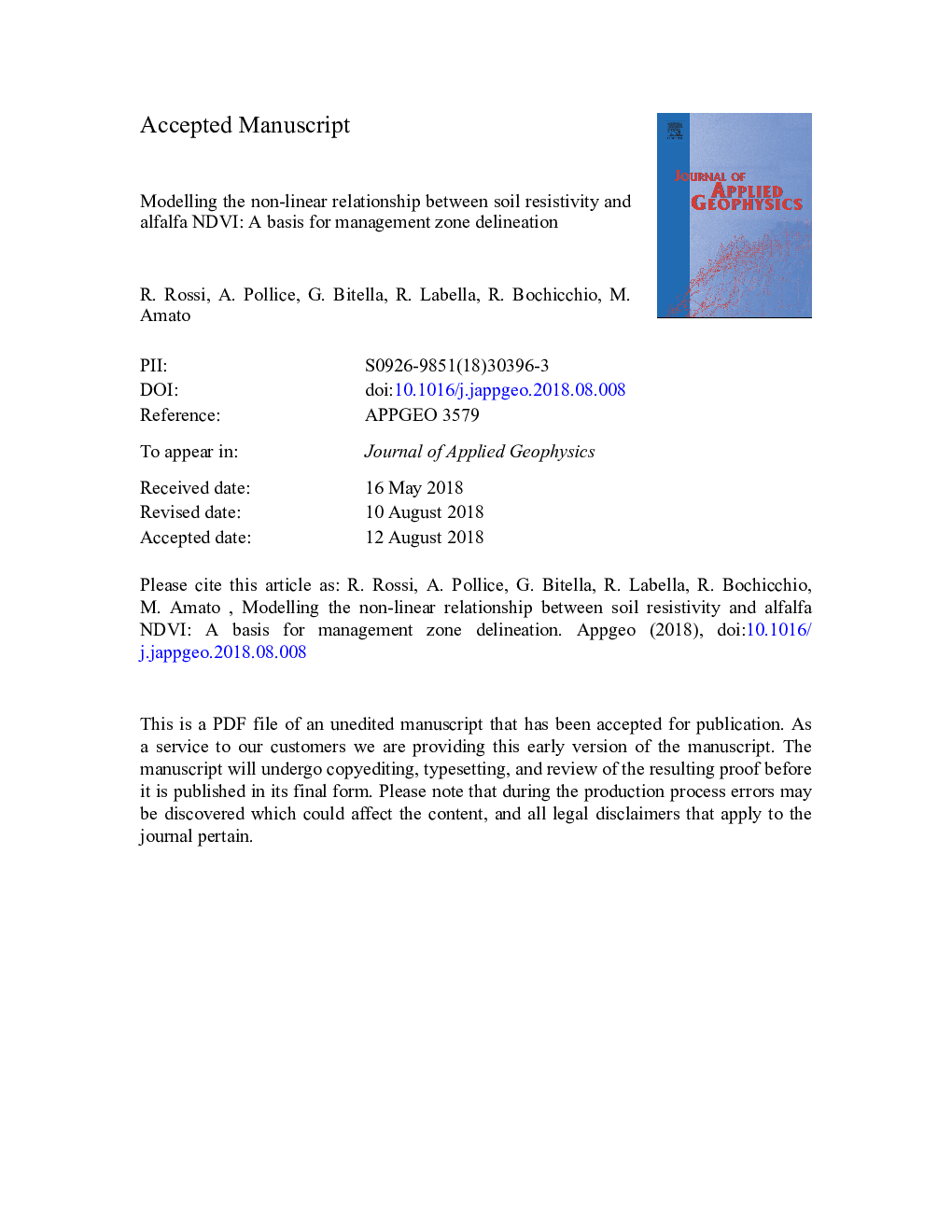| کد مقاله | کد نشریه | سال انتشار | مقاله انگلیسی | نسخه تمام متن |
|---|---|---|---|---|
| 10121026 | 1641092 | 2018 | 35 صفحه PDF | دانلود رایگان |
عنوان انگلیسی مقاله ISI
Modelling the non-linear relationship between soil resistivity and alfalfa NDVI: A basis for management zone delineation
دانلود مقاله + سفارش ترجمه
دانلود مقاله ISI انگلیسی
رایگان برای ایرانیان
کلمات کلیدی
AICMZAATVNCEGAMDGPSBICNIRLEDs - LED هاFPI - REITSoil spatial variability - تنوع فضایی خاکLight emitting diodes - دیودهای نوریLeaf area index - شاخص سطح برگNDVI - شاخص نرمالشده تفاوت پوشش گیاهی LAI - شبیهCoefficient of Variation - ضریب تغییرdry matter - ماده خشکNear infrared - مادون قرمز نزدیکGeneralized additive models - مدل های افزایشی عمومیBayesian information criterion - معیار اطلاعات بیزیAkaike information criterion - معیار اطلاعاتی آکائیکResistivity - مقاومتElectrical resistivity - مقاومت الکتریکیManagement zone - منطقه مدیریتPrecision agriculture - کشاورزی دقیقPrecision farming - کشاورزی دقیقAlfalfa - یونجه
موضوعات مرتبط
مهندسی و علوم پایه
علوم زمین و سیارات
فیزیک زمین (ژئو فیزیک)
پیش نمایش صفحه اول مقاله

چکیده انگلیسی
Alfalfa is one of the most important forage legumes in the world, and increasing its competitiveness is among European priorities. One issue that needs to be specifically addressed in designing agronomic strategies for perennial crops like alfalfa is their higher dependence on deep soil resources compared to annuals, but tools for mapping soil variability at the relevant depth are needed. We analysed the relationship between multi-depth soil resistivity and alfalfa NDVI variation across two years. Forage ground cover was significantly and non-linearly related to multiple-depth resistivity at all dates with different shapes of non-linear relationships. NDVI showed time-persistent spatial features related to soil variability. Generalized additive models proved to be an effective modelling technique for expressing the non-linearity that frequently occurs in soil-plant relationships. It was used here as a base for a soil zonation that splits the field in areas which correspond to permanent soil features and different plant-soil relationships. This approach to management zone delineation was compared to a zonation obtained using a standard methodology based on the use of a fuzzy c-means clustering algorithm. Results are discussed in terms of management decisions and possible applications to perennial forage research.
ناشر
Database: Elsevier - ScienceDirect (ساینس دایرکت)
Journal: Journal of Applied Geophysics - Volume 159, December 2018, Pages 146-156
Journal: Journal of Applied Geophysics - Volume 159, December 2018, Pages 146-156
نویسندگان
R. Rossi, A. Pollice, G. Bitella, R. Labella, R. Bochicchio, M. Amato,